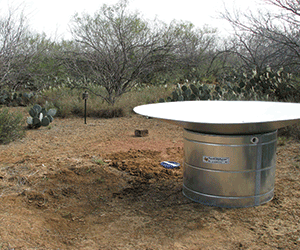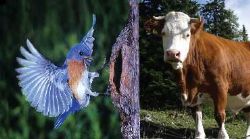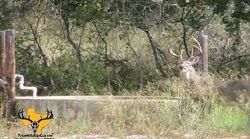 The State of Texas is not only a phenomenal State in which to buy real estate, it also is the only State in the U.S. that offers landowners a way to keep rural land taxes low by managing the land for a native or migratory species of wildlife.
The State of Texas is not only a phenomenal State in which to buy real estate, it also is the only State in the U.S. that offers landowners a way to keep rural land taxes low by managing the land for a native or migratory species of wildlife.
Having taught many hundreds of landowners, REALTORS® and developers about this valuation methodology I almost always run into someone that claims wildlife management for tax valuation is a tax avoidance scheme. I'll let you be the judge after you read this article!
TAXES AND YOUR LAND
There are several components that make up your property taxes on rural property (provided the property has acreage associated with it). You're taxed for any improvements (homes, roads etc.) and then the acreage will have a tax value for a particular agricultural use (i.e. livestock, haying and cropland, etc.)
APPRAISAL METHODS
Land is either taxed at " market value" or appraised for some sort of agricultural use. When someone buys or inquires about rural land, they almost always ask if the land is "ag exempt". The term "ag exempt" has been misused for many years. The only TRUE exemptions are found in the "Texas Property Tax Code" (the code) in chapter 11. What the inquirer is asking, is if the land has been appraised for an agricultural use or is it open space qualified.
PROTECT YOUR ASSETS
How do you determine if the land you are buying is "ag qualified"? You could call the local county appraisal district and ask them or you could ask a real estate professional to get the information for you. Even if you get the answer you are looking for, how do you KNOW that the land "is currently devoted principally to agricultural use to the degree of intensity generally accepted in the area" or is being qualified? Land must be qualified five of the preceding seven years.
How will you prove "qualified ag use" to the county appraisal district "if the CAD asked you to" for the years that you did not own the land?
Example: if the land has been appraised for an agricultural use in 2016, the buyer bought the land in 2012 and in 2017 the COUNTY APPRAISER sends a notice asking the NEW BUYER to PROVE that the property has been qualified for ag use in years 2016, 2015, 2014, 2013 and 2012 (What do you, the NEW BUYER do?) If you were asked to "prove up", how would you do it? The history of the land goes with the new owner (you) not the seller.
PROOF IS IN THE "PUDDIN"
If you are a buyer of land, may I offer a suggestion to you? Ask whoever you are dealing with for some sort of written proof that shows the land is being qualified. Don't fall for statements like the "my land has been in ag for decades" or the county appraisal district has me as "ag exempt".
If the seller will not provide you with "written proof" of qualification that could be a strong negotiating point for you the buyer. If you are willing to take the financial hit for the years the land is not qualified, then do so, and subtract the back taxes you may have to pay from the asking price in your offer.
LAND BOUGHT – NOW WHAT?
Can you say, "do more paperwork! " You are going to have to determine what you want to do with the land in terms of ag use. If it is not "ag qualified", then you are biting the bullet and are paying market taxes on it. If you are building a home on it or qualify for other exemptions as outlined in chapter 11 of the code, you may be eligible for some exemptions (see the code to make that determination).
WHAT IS WILDLIFE MANAGEMENT USE?
Texas is the only State that allows rural land to be appraised for wildlife management use by managing for native or migratory wildlife.
- At the time the landowner applies for wildlife management use, at least three of the following seven management practices must be done to sustain a breeding, migrating or wintering population of indigenous wild animals.
- The practices are: habitat control, erosion control, predator control, providing supplemental supplies of water, providing supplemental supplies of food, providing shelters and making of census counts to determine population.
THE FILING PROCESS
A written wildlife management plan along with the 1-d-1 open space appraisal form must be submitted to the chief appraiser before May 1. Described activities and practices in the wildlife management plan must be consistent with TPWD Texas Parks and Wildlife recommendations for the region where the property is located.
One note here, you are not required to use a professional to write your plans, keep in mind you are dealing with your property taxes. So, if you are uncertain about what to do, a small investment to have someone coach you or complete the entire process, could save you time and worry.
know your rights!
If you are a do it yourself type of person, know where to look for information.
- Texas Property Tax Code –Subchapter D-§23.51(1) and (7) and §23.251
- Texas Administration Code-(Chapter 34, Rules 9.2001-9.2005)
- Texas Comptroller's -"Manual for the Appraisal of Agricultural Land"
- Texas Comptroller's -"Guidelines for Qualification of Agricultural Land in Wildlife Management Use"
WANT COPIES OF THE DOCUMENTS ABOVE? PLEASE FILL OUT THE FORM BELOW.





